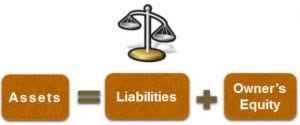
Every member has received the benefit of having enjoyed the membership of the club for one month, at the end of the first month. Since the country club has fulfilled one month of its requirement to offer membership benefits to its members, it shall recognize 1/12th of the annual fees as Revenue and decrease the deferred revenue by the same amount. A business might have a substantial inflow of cash from prepayments, leading it to believe it has more liquid assets than it can actually use. For instance, a gym collecting yearly membership fees in January might be tempted to invest heavily or expand.
At Bench, we work with you to ensure your financial reporting needs are met while keeping you IRS compliant. We do this by automatically importing all of your business transactions into our platform for your personal bookkeeper to categorize and review. They’re available to you by message or appointment to go over your books and review key information. At the end of the first month into the membership, every member has « received » the benefit of having enjoyed the club for one month. Therefore, the country club has satisfied one month (1/12th) of its requirement to offer country club benefits for a full year. It’s time to get into all the nitty-gritty details surrounding deferred revenue.
Double-entry Accounting
Another consideration is that once the revenue is recognized, the payment will now flow down the income statement and be taxed in the appropriate period in which the product/service was actually delivered. The measurement of an assumed legal performance obligation is at fair value as of the date of acquisition, pursuant to the guidance in ASC Topic 820, Fair Value Measurement. On the contrary to what the names suggest, unearned revenue and deferred revenue are both the same thing. They are both incomes for which the cash has been collected, but the obligations of delivering goods and services are yet to be performed.
- In accrual accounting, a liability is a future financial obligation of a company based on previous business activity.
- RightRev simplifies the whole process with its advanced revenue automation solution.
- This requires meticulous tracking on behalf of accounting teams to ensure accurate financial reporting that reflects all the complexities of deferred revenue management and the revenue recognition principle.
- For example, a contractor might use either the percentage-of-completion method or the completed contract method to recognize revenue.
- Once the service is delivered, the company can reduce the deferred revenue liability and record the amount as revenue on its income statement.
- Taxes are incredibly complex, so we may not have been able to answer your question in the article.
No, in cash basis accounting revenue is reported only after it has been received. As well, expenses in cash basis accounting are recorded only when they are paid. As noted previously, the profit margin should be from the perspective of a market participant. Since the GAAP requires us to book revenue as soon as deferred revenue is classified as it is earned, the revenue is proportionately recorded according to work done throughout the contract period until the final good or service is delivered. Unearned revenue usually occurs in subscription-based trading or service industries, where payments are taken in advance and services are performed later.
Why Is Deferred Revenue a Liability?
Deferred revenue is earned when a company collects money for a service it has yet to provide. This usually happens for service companies that wait to perform the job until at least a portion of the job is paid for. A company incurs deferred revenue by following through on its end of the contract after payment has been made. For example, a contractor might use either the percentage-of-completion method or the completed contract method to recognize revenue. Under the percentage-of-completion method, the company would recognize revenue as certain milestones are met. Under the completed-contract method, the company would not recognize any profit until the entire contract, and its terms were fulfilled.
- Some industries also have strict rules around what you’re able to do with deferred revenue.
- But if it fails to deliver that product or service and has to return payments to its customers, it’ll show a big loss if and when that happens.
- Due to the incomplete nature of the revenue recognition process in accrual accounting, deferred revenue, also known as unearned revenue, is recorded as a liability on the balance sheet.
- In either case, the company would repay the customer, unless other payment terms were explicitly stated in a signed contract.
- The timing of recognizing revenue and recording is not always straightforward.
For example, a company receiving annual subscription payments upfront for a service rendered over the year would record deferred revenues. Consider a software firm receiving $120,000 for a year-long subscription service. Initially, it would record deferred revenue in the full amount on its balance sheet as a liability. It’s important to clarify the distinctions between deferred revenue (also called unearned revenue) and recognized revenue.
You shouldn’t spend it the same way you spend regular cash
It’s a fundamental aspect of ethical business practices, helping to ensure transparency, reliability, and accuracy in financial reporting. Lastly, it’s important to manage customer expectations when dealing with deferred revenue. Customers who prepay do so with a certain level of trust, expecting timely delivery of the promised goods or services. If they’re constantly dealing with canceled sessions or subpar instructors, their trust erodes, possibly leading to refund requests or negative reviews.

Understanding how deferred revenue interacts with your financial statements has practical implications for managing your company’s finances and can significantly influence how external parties perceive your business. Deferred revenue is shown as a liability because it reflects an obligation to provide goods or services in the future, and until that obligation is fulfilled, the company holds that money on behalf of its customers. Understanding liabilities is crucial for comprehending deferred revenue accounting. Liabilities are caused by various commercial circumstances, all of which are connected to instances in which a firm owes money to another entity. A liability is a financial debt of a corporation based on past business activity in accrual accounting. While deferred revenue and deferred expenses are viewed from the company’s perspective, accrued revenue and expenses are viewed from the perspective of the party receiving or providing the goods or services.
The timing of customers’ payments can be volatile and unpredictable, so it makes sense to ignore the timing of the cash payment and recognize revenue when it is earned. On August 1, Cloud Storage Co received a $1,200 payment for a one-year contract from a new client. Since the services are to be delivered equally over a year, the company must take the revenue in monthly amounts of $100. It provides upfront cash, which can be used for operations, even though this cash is only gradually recognized as revenue. That means you would make the following journal entry on January 31st, to decrease the deferred revenue liability by $200 and increase membership revenue by $200.
Customer payments for products or services they anticipate receiving in the future are known as deferred revenues. The firm owes the client money until the service is rendered or the product is delivered, momentarily turning the income into a liability. Once generated, revenue is recognized and recorded as revenue rather than being postponed. Deferred revenue is recognized as a liability on the balance sheet of a company that receives an advance payment. This is because it has an obligation to the customer in the form of the products or services owed.
